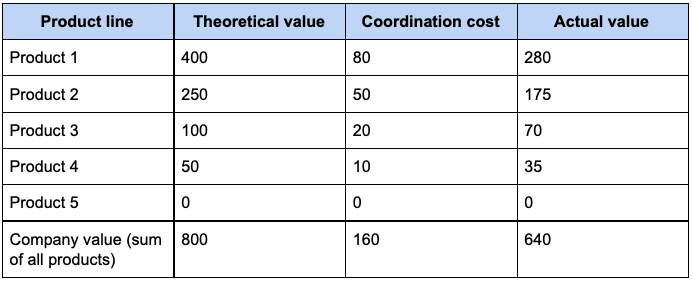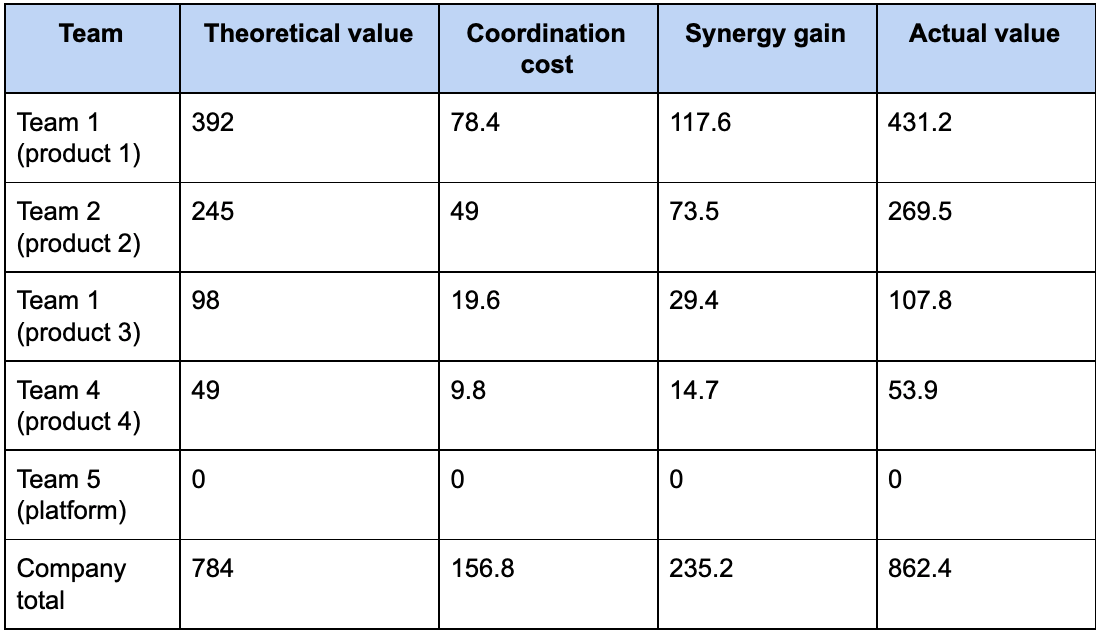The end goal for any software product team is to build synergistic products, rather than additive products. After all, when you build a product, you don’t just want to create value through your own product; you also want to create additional value in your company’s other product offerings, and that means that you’re creating product synergies.
In other words, you want to ensure that you’re creating multiplicative value, or else you’ll never be able to meet your investors’ demands for growth.
How do we unlock that kind of multiplicity?
Thankfully, we have a tried-and-true playbook for unlocking synergies across products, which we discuss below.
But first, let’s define what product synergy is.
What are product synergies?
Synergy is what happens when “the sum is greater than its parts” – in other words, it’s what happens when you have two features working together to create huge value that wouldn’t have been possible before.
Here’s a Google product synergy example.
When you book a flight and receive your flight confirmation email in your Gmail inbox, Google Calendar will automatically create a meeting invite to block off your travel time. Google Calendar can’t work its magic unless you’re using Gmail, and Gmail can’t work its magic unless you’re using Google Calendar.
So, what does this mean for our company’s portfolio of products? Well, we can use an equation that looks something like this:
valuecompany = sum((valueproduct1 + valueproduct2 + … + valueproductN) * (1 – coordCost) * (1 + synergy)
What does all of this mean? Well, valuecompany means “how much the company is worth”, and valueproduct1 means “the value that you create through your first product”.
You add up all of the value for all of your products up through your “nth” product as valueproductN, and that’s the sum.
Then, you have to pay some sort of coordination cost penalty – the more products you have, the harder it is to coordinate, and the more you lose out on product development velocity. We can model this as (1 – coordCost).
And finally, you can increase the total value of the company by creating multiplicative synergy. We can model this as (1 + synergy).
To be clear, the equation above is a very oversimplified model. Typically, products only have synergy with a limited set of products, rather than with the full product portfolio as well. Still, for the purposes of modeling, let’s say that we can apply synergy across all products.
Product leaders have to make the decision all the time: does it make sense to add a new product, or to increase synergy, or to decrease coordination costs? We can play with different factors to figure that out.
Modeling out product synergies
Let’s use the example from our previous article on coordination costs, where we had 4 feature product teams and 1 platform product team:
- The coordination cost of any “handshake” (that is, any interaction between two teams) was reduced from 5% to 2% due to the work of the dedicated platform team
- Since there are 5 teams, there are 5 * 4 / 2 = 10 handshakes
- So the company faces a coordination cost of 20%
Here’s the model again from last time:

Link to model: https://docs.google.com/spreadsheets/d/1fl_Wj4IMQ6k77wpoRKioQyvQH-VFu31lggefZUXr0vI/edit#gid=2011582128
Let’s say that we bring in a new Head of Product who’s focused on creating product synergies across the products, so that each product builds on top of the other.
We call this the flywheel effect – one product powers another product, and the other product feeds back into the first product.
The flywheel effect is one of the reasons why Amazon has become such a product powerhouse. That is, they focus on building synergistic products rather than linear products, and they invest significant time and thought into unlocking product synergies.
For our example, let’s say that the Head of Product decides that each product manager will now spend 1 hour per week working on product synergies rather than on linear product value. 1 hour makes up about 2% of a 50-hour workweek, so let’s reduce the theoretical value of each product line by 2%.
But, similar to the handshake effect, we have a flywheel effect in place now that we have synergies. Since each product is taking advantage of other products, we can model the flywheel effect as the direct opposite of the handshake problem.
Say that each product pairing creates 3% of synergistic value. That is, when product A and product B are paired together, product A is 3% more effective than it would be on its own.
But, there are 5 products, so that means there are 5 * 4 / 2 = 10 product pairs. We can get a synergy gain of 30% across the product portfolio.
So, the model now looks something like this:

Link to model: https://docs.google.com/spreadsheets/d/1630s6F4sCkfaBMM3q-CZDmyvyY_nRHVeGyx7wptJAZY/edit#gid=846873051
By investing in synergies, the new Head of Product has increased the company value from 640 to 862.4, which is a 30%+ increase in value. By shifting 2% of her product management team’s time towards focusing on synergy instead of on linear product value, she’s unlocked significant latent value that went previously undiscovered.
This is why it’s so important for mature product companies to hire solid Heads of Product and to invest in product synergies. A great one will discover these opportunities for synergies and will enforce processes for acting on them, whereas a mediocre one will be too narrowly focused on linear product value.
Ways to increase product synergies
Given the explosive impact that product synergies can have on a company’s ability to deliver value, it’s crucial that we know how to increase synergy.
Here are some concrete ways to increase the synergy between products:
- Shared user research
- Integrations
- Customer testimonials
First, when product teams share user research findings with one another, they discover innovative new ways to tackle customer pain points from a variety of angles.
That is, even though you might have conducted user research in the context of a single product team’s ask, that user’s pains could potentially be solved through many other products too. As an example, “I want to share life updates with friends” can be solved through Facebook Messenger, Facebook status updates, Facebook stories, and Facebook wall posts.
The same pain can be tackled by multiple products, and that’s why sharing user research across product teams is crucial.
When product teams dedicate time to crafting an integrations strategy, e.g. enabling third parties to integrate to their products, they create an ecosystem of integrations that funnel into one another and significantly grow the product.
As an example, Salesforce focuses significant attention on enabling others to build integrations to its products. That means that for every $1 that Salesforce earns, third party partners and vendors earn about $5.
Because third parties are so incentivized to build for Salesforce, the Salesforce product itself gains new capabilities through integrations that the Salesforce product team doesn’t have to directly build on their own.
Third, when product teams invest in capturing customer testimonials and in creating “raving fans” from their customer base, they create customer-side champions who will sing the product’s praises to the marketplace.
That creates a unique set of downstream synergistic advantages:
- The customer champion is more likely to use the full set of product capabilities available
- The customer champion is more likely to provide candid and actionable feedback
- The customer champion is more likely to participate in product pilots
- The customer champion can more easily identify missing product synergies
All of these then enable product teams to better acquire, retain, and grow customers.
Closing thoughts
It’s not enough for product managers to know how to deliver linear product value. Product managers must also know how to reduce coordination costs, and they must also know how to increase synergies between products.
By sharing user research, by investing in a platform integrations strategy, and by investing in customer testimonials, you’ll be able to grow not just your product, but also the products of your teammates. That’s a fantastic way to multiplicatively increase your impact!
Want to learn more about product synergies? Chat with other product managers around the world in our PMHQ Community!